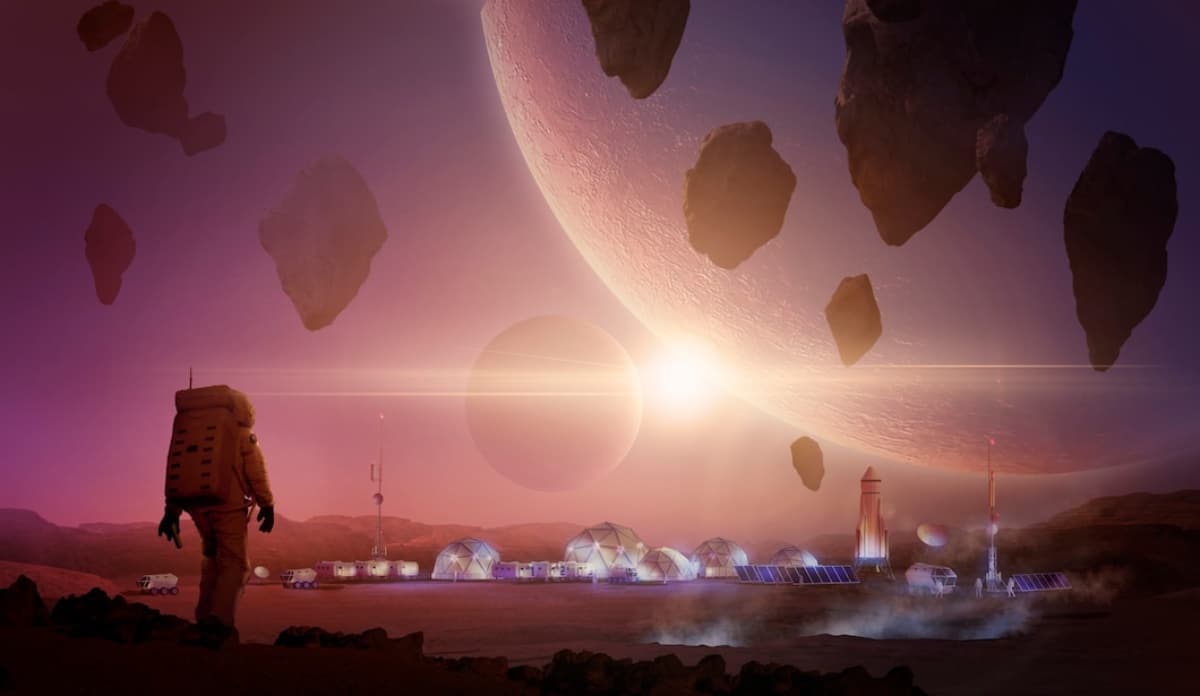
Space Habitats: Building the First Human Settlements Beyond Earth
Humanity’s Next Giant Leap
Space habitats are sustainable places for living outside of Earth. They are now a reality, not just a sci-fi idea. Interest from national space agencies and private aerospace companies is growing. This has led to exciting talks about future space colonies. The focus is on the architecture and technology needed to make these colonies a reality. As humanity reaches further into the cosmos, the question has evolved from “can we travel to space?” to “can we live there?”
Exploring other planets, moons, and orbital platforms is more than curiosity. It’s about survival and sustainability. Building space habitats is important. Whether it’s due to overpopulation, resource scarcity, or the desire to live on other planets, this challenge is a key frontier.
In this post, we’ll explore recent developments in space architecture. We’ll look at various types of space habitats and discuss their challenges and innovations. Plus, we’ll highlight key players making off-world living a reality. We will also look at the ethical and social considerations of establishing human life beyond Earth.
The Evolution of Space Habitat Concepts
From Skylab to the ISS
The idea of humans living in space began with temporary orbital labs. NASA’s Skylab launched in the 1970s. It was the first major effort to create a livable space for humans beyond Earth. Next came the International Space Station (ISS). It is a joint effort of 15 nations. The ISS is still the most successful long-term space habitat ever built.
Fiction Meets Reality
Science fiction has long romanticised off-world living. Think of Arthur C. Clarke’s orbital colonies or the rotating space stations in “2001: A Space Odyssey.” Today, architects and engineers are using those ideas to make realistic, science-based designs. Ideas like Stanford toruses, O’Neill cylinders, and Bernal spheres have moved from dreams to early designs.
The New Age of Space Architecture
Private companies like SpaceX, Blue Origin, and Axiom Space are speeding up progress in space travel and habitats. NASA’s Artemis programme aims to establish a base on the Moon by the end of the decade, which could serve as a launchpad for Mars colonisation.
Types of Space Habitats: Designs and Functions
Lunar Bases
The Moon offers the nearest testing ground for long-term human habitats. Moonbase ideas often feature underground homes. These habitats protect people from radiation, extreme temperatures, and meteorite strikes. ESA and JAXA are investigating 3D-printed lunar shelters using local regolith.
Martian Colonies

Mars is the most discussed target for human settlement. The planet has a day length similar to Earth, seasonal cycles, and some water sources. Challenges include a thin atmosphere, high radiation, and extreme cold. Elon Musk’s Starship missions and NASA’s Mars Habitat Challenge focus on testing habitats for Mars.
Orbital Space Stations
Beyond planets, orbital habitats present a versatile solution. Rotating structures can simulate gravity through centrifugal force. These stations can serve as hubs for research, tourism, and transport. Bigelow Aerospace and others suggest using inflatable modules. These modules provide more space inside but keep launch weight low.
Asteroid Bases
Building habitats in hollowed-out asteroids is a more speculative idea. However, it can protect us from radiation and micrometeorites. These bases could also act as mining stations for rare minerals, potentially supporting Earth’s industries.
Engineering Challenges in Space Habitat Construction
Life Support Systems
Maintaining air, water, food, and waste recycling is paramount. NASA’s Environmental Control and Life Support System (ECLSS), used on the ISS, is a basis for future systems. Advanced hydroponics and aquaponics are being explored for sustainable food sources.
Radiation Protection
Outside Earth’s magnetic field, radiation is a major threat. Strategies include:
- Building underground or using planetary regolith for natural shielding
- Using polyethylene or water tanks in walls to absorb cosmic rays
- Employing magnetic field generators to mimic Earth’s protection
Temperature Regulation
Environments on the Moon and Mars experience extreme temperature fluctuations. Advanced thermal insulation and dynamic temperature control systems are crucial. They help protect structures and ensure comfort for people.
Energy Supply

Solar power is the most viable option for near-Earth and Martian habitats. Nuclear reactors are considered for more distant colonies. Energy storage systems, like fuel cells and high-capacity batteries, must be efficient and reliable.
Mobility and Expansion
Habitats must allow for modular expansion. Rovers, robotic arms, and autonomous drones can be used to assemble units. Inflatable modules, foldable designs, and prefabricated kits are being tested. They aim for quick deployment and easy scaling.
Human Factors and Psychological Challenges
Isolation and Confinement
The psychological toll of space travel is immense. Being confined in limited spaces with the same group for extended periods can lead to mental health issues. Strategies include:
- Virtual reality systems for entertainment and relaxation
- Scheduled communication with loved ones
- Rotating tasks and responsibilities
Circadian Rhythm Disruption
In space or on planets with different day lengths, maintaining a consistent circadian rhythm is challenging. Adjustable lighting systems are designed to simulate Earth’s day-night cycle.
Social Dynamics
Conflict resolution training, group cohesion exercises, and psychological screening are now key parts of astronaut training.
Future Technologies Powering Space Habitats
- Artificial Gravity: Created by rotating habitats. This helps prevent muscle atrophy and loss of bone density.
- Bioregenerative Life Support Systems: These are closed-loop systems. They mimic Earth’s biosphere by using plants and microbes.
- Autonomous Construction Robots: Essential for building habitats before humans arrive.
- Smart Materials: Self-healing polymers, insulation foams, and adaptive surfaces enhance durability.
- Space Internet and Communication: NASA and SpaceX are testing high-speed internet systems for space.
Ethical and Environmental Considerations
Planetary Protection
It is essential to prevent biological contamination of other worlds. International guidelines ensure that microbes from Earth don’t disrupt potential alien ecosystems.
Ownership and Governance
Who owns space? Current treaties, such as the Outer Space Treaty, ban national claims. However, they don’t clearly cover private ownership or resource rights.
Equity and Access
Will space only be accessible to wealthy nations or corporations? Advocacy is growing for inclusive, cooperative space exploration involving global partnerships.
Sustainability
Can we ensure that colonisation doesn’t lead to the same exploitative patterns seen on Earth? To build sustainable space habitats, we must learn from past mistakes on Earth. It’s important to focus on reducing environmental impact.
Conclusion: Building Tomorrow’s Cosmic Homes
The journey to build the first human settlements beyond Earth is both thrilling and daunting. Thanks to new tech tools, global teamwork, and fresh designs, what once felt like a dream is becoming real. What we do today will shape the future of human civilisation. It doesn’t matter if we build the first base on the Moon, settle on Mars, or live in big orbital stations.
Space habitats show our resilience, creativity, and endless curiosity. They are more than engineering wonders. They compel us to think not only about how we live but why and where. As we move toward being an interplanetary species, we must uphold our best values: sustainability, cooperation, and scientific integrity.
Are we ready to call space our next home? The tools are in motion, and the blueprint is clear. Now is the time to inspire the next generation of scientists, dreamers, and explorers to reach for the stars.
Join the conversation: What do you think are the most promising innovations in space habitat design? Share your thoughts below or follow us for more insights on the future of life beyond Earth.


